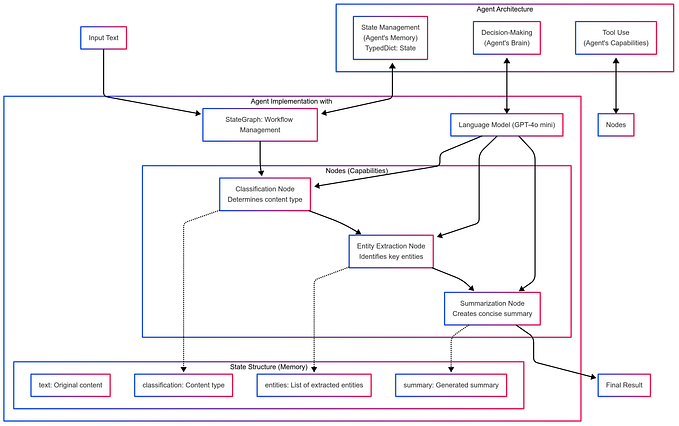Rust vs Python: Choose the Right Programming Language for Your Project

Choosing the right programming language for a project is crucial for developers. To make this decision wisely, several factors must be taken into account, including community support, user-friendliness, and performance. This article aims to explore two widely used programming languages, Rust and Python, by examining their features, suitable applications, strengths, and weaknesses. Furthermore, we will conduct a detailed comparison of Rust and Python performance to assist you in making a well-informed choice.
What is Rust?
Rust is a modern programming language focusing on speed, safety, and concurrency. It’s like a reliable toolbox for developers, offering robust features while ensuring code correctness and preventing common bugs. Rust’s key strength lies in its ability to catch errors at compile time, making programs more stable and secure. This makes it ideal for systems programming, game development, and building robust web applications. Rust also excels in parallel processing, allowing for efficient utilization of modern hardware. Its syntax is clean and easy to read, making it accessible for beginners and experienced developers. Supported by a vibrant community and comprehensive documentation, Rust is a versatile language that empowers programmers to create high-performance, reliable software solutions.
Why Choose Rust?
Here are some points on why you might choose Rust:
Safety First:
- Rust prioritizes safety using a strict compiler that catches errors at compile time, reducing the chances of bugs and vulnerabilities in your code.
- It enforces memory safety and prevents common programming mistakes like null pointer dereferencing and buffer overflows, leading to more reliable and secure software.
Blazing-Fast Performance:
- Rust is designed for speed, providing performance comparable to low-level languages like C and C++.
- Its zero-cost abstractions and efficient memory management enable developers to build highly optimized and fast-running applications, making it suitable for performance-critical tasks.
Concurrency Made Easy:
- Rust’s ownership and borrowing system allows for safe and efficient concurrent programming without the risks of data races and deadlocks.
- Developers can confidently write concurrent code, leveraging Rust’s powerful features like threads, async/await, and message passing for scalable and responsive applications.
Growing Ecosystem:
- Rust has a vibrant and supportive community that actively contributes to its ecosystem, creating a wealth of libraries, frameworks, and tools.
- The comprehensive documentation, tutorials, and learning resources make it accessible for developers of all levels, facilitating rapid learning and adoption.
Reliability and Robustness:
- Rust ensures code correctness and reliability through its robust type system and borrows checker, leading to more maintainable and bug-free codebases.
- Its emphasis on writing safe and predictable code results in software that is resilient, scalable, and easier to debug and maintain over time.
What are the Limitations of Rust?
Here are the limitations of Rust explained, broken down into points:
Learning Curve:
- Rust has a steep learning curve, especially for developers new to systems programming or low-level languages.
- Understanding concepts like ownership, borrowing, and lifetimes can be challenging initially, requiring time and effort to grasp fully.
Strict Compiler:
- While Rust’s strict compiler catches errors at compile time, it can also be unforgiving for beginners, leading to frustration during development.
- Developers may encounter compiler errors and borrow checker issues, requiring them to refactor code or adjust their programming approach.
Limited Library Support:
- Rust has a more miniature ecosystem of libraries and frameworks than more established languages like Python or JavaScript.
- This can make it challenging to find ready-made solutions for specific tasks, requiring developers to either build their libraries or work with existing ones that may be less feature-rich.
Slow Compilation Times:
- Rust’s emphasis on safety and performance comes at the cost of longer compilation times, especially for larger projects.
- Waiting for code to compile can be time-consuming, affecting developer productivity and iteration cycles.
Memory Management Overhead:
- While Rust’s ownership system ensures memory safety, it can also introduce overhead in managing memory allocation and deallocation.
- Developers must be mindful of memory usage and lifetimes, which can add complexity to code and require careful planning.
Tooling and IDE Support:
- While Rust has significantly improved tooling and IDE support, it may not be as polished or feature-rich as other languages.
- Developers may encounter limitations in IDE features like code completion, refactoring tools, and debugging support, which can affect their development experience.
Utilization of Rust
Here’s the elaboration on the utilization of Rust, broken down into points:
System Programming:
- Rust is well-suited for system-level programming tasks such as operating systems, device drivers, and embedded systems.
- Its emphasis on memory safety and low-level control makes it a reliable choice for building robust and efficient software at the system level.
Web Development:
- Rust is increasingly used in web development, particularly for backend services and APIs.
- Its speed, concurrency model, and safety features make it ideal for handling high-traffic web applications that require performance and reliability.
Game Development:
- Rust is gaining popularity in game development due to its performance capabilities and safety guarantees.
- Rust’s efficiency and ability to manage complex systems can benefit game engines, simulations, and real-time applications.
Parallel and Concurrent Programming:
- Rust excels in parallel and concurrent programming, allowing developers to write scalable and responsive applications.
- Tasks like data processing, scientific computing, and parallel algorithms can leverage Rust’s concurrency features for optimal performance.
Networking and Systems Services:
- Rust is used for building networking applications, network protocols, and distributed systems services.
- Its ability to handle asynchronous tasks, manage network resources efficiently, and ensure code safety makes it a reliable choice for networking-related projects.
Tools and Infrastructure:
- Rust is utilized in developing tools, utilities, and infrastructure software for various purposes.
- Build systems, package managers, compilers, and other development tools can benefit from Rust’s performance, reliability, and cross-platform compatibility.
What is Python?
Python is a versatile and user-friendly programming language renowned for its simplicity and readability. It’s a go-to choice for a wide range of applications, from web development and data analysis to artificial intelligence and automation. Python’s extensive library ecosystem and easy-to-learn syntax make it ideal for beginners and professionals alike. Whether you’re building a website, analyzing complex datasets, creating machine learning models, or automating tasks, Python empowers you to do it efficiently and effectively.
For businesses and projects looking to harness the power of Python, leveraging Python Development Services can be a game-changer. These services offer expertise in Python programming, helping businesses build scalable, robust, and innovative solutions tailored to their specific needs. With Python’s versatility and the support of dedicated development services, the possibilities are endless.
Why Choose Python?
Here’s an elaboration on why Python is a great choice, broken down into points:
Ease of Learning:
Python is beginner-friendly. Its simple syntax and readability make it easy for newcomers to programming to understand and learn.
Vast Library Ecosystem:
Python boasts a rich library ecosystem with thousands of ready-to-use modules and packages for various tasks, saving time and effort in development.
Versatility:
Python is versatile and suitable for a wide range of applications, including web development, data analysis, machine learning, automation, and more.
Community and Support:
Python has a large and active community of developers who contribute to its growth, providing support, tutorials, and resources for learners and professionals alike.
Cross-Platform Compatibility:
Python code is platform-independent, meaning it can run on different operating systems, such as Windows, macOS, and Linux, without modifications.
Scalability:
Python is scalable, allowing developers to start with small projects and scale up to large, complex applications as needed.
Integration Capabilities:
Python integrates seamlessly with other languages and technologies, making it a preferred choice for building integrated systems and workflows.
Rapid Prototyping:
Python’s quick development cycle and easy testing capabilities make it ideal for rapid prototyping and iterative development processes.
What are the Limitations of Python?
Performance:
- Due to its interpreted nature, Python can be slower than languages like C or C++, which may not be suitable for high-performance computing tasks or real-time applications.
- While libraries like NumPy and Pandas improve performance for data-intensive tasks, pure Python code may still need performance bottlenecks.
GIL (Global Interpreter Lock):
- Python’s Global Interpreter Lock (GIL) can limit the ability to effectively utilize multiple CPU cores in specific multithreaded applications, impacting concurrency and parallelism.
Mobile Development:
- Python is not commonly used for mobile app development compared to languages like Java or Swift, although frameworks like Kivy and BeeWare offer solutions.
Memory Consumption:
- Python can consume more memory than languages like C or Rust, particularly in memory-intensive applications or when handling large datasets.
Less Ideal for Low-Level Programming:
- Due to its high-level abstractions and garbage collection, Python may not be the best choice for low-level programming tasks such as operating systems or device drivers.
Dependency Management:
- Python’s dependency management can sometimes be challenging, especially when dealing with conflicting package versions or complex project dependencies.
Limited Speed for CPU-Bound Tasks:
- While Python excels in I/O-bound tasks, it may need to catch up in CPU-bound tasks where performance is critical, although optimization techniques can help mitigate this limitation.
Packaging and Distribution:
- Packaging and distributing Python applications across different platforms can be cumbersome, requiring additional tools and considerations for compatibility and installation.
Utilization of Python
Web Development:
Python is widely used for web development, with frameworks like Django and Flask providing robust tools for building dynamic and scalable web applications.
Data Science and Machine Learning:
Python is the go-to language for data science and machine learning tasks, thanks to libraries like NumPy, Pandas, Scikit-Learn, and TensorFlow, making it easier to analyze data, build models, and deploy machine learning solutions.
Automation and Scripting:
Python’s simplicity and readability make it ideal for automating repetitive tasks, scripting, and writing utility programs, improving productivity and efficiency.
Scientific Computing:
Python is used in scientific computing and research. It offers libraries like SciPy, Matplotlib, and Jupyter for numerical computations, data visualization, and interactive computing environments.
Game Development:
Python is utilized in game development, with frameworks like Pygame providing tools for creating 2D games, simulations, and interactive experiences.
Desktop GUI Applications:
Python can be used to build desktop GUI applications using libraries such as Tkinter, PyQt, and wxPython. These allow developers to create user-friendly interfaces for their applications.
Backend Development and APIs:
Python is commonly used for backend development, powering server-side logic, APIs, and microservices. Frameworks like FastAPI and Flask offer streamlined solutions.
Education and Learning:
Python is widely used in educational settings for teaching programming concepts, thanks to its simplicity, readability, and extensive documentation, making it accessible for beginners and educators alike.
DevOps and System Administration:
Python is utilized in DevOps and system administration tasks for automation, configuration management, deployment scripts, streamlining operations and infrastructure management.
Rust vs Python: The Key Differences
Here’s a detailed elaboration on the key differences between Rust and Python, broken down into points:
Performance:
- Rust: Known for its high performance, Rust is a statically typed and compiled language that provides efficient memory management and low-level control. It’s ideal for applications requiring speed and responsiveness, such as system-level programming, game engines, and performance-critical software.
- Python: Python is an interpreted language with dynamic typing, which can lead to slower execution speeds compared to Rust, especially for CPU-intensive tasks. It’s commonly used for rapid development, scripting, and applications where performance is not the primary concern.
Memory Management:
- Rust: Rust offers fine-grained control over memory management through its ownership and borrowing system. This ensures memory safety without relying on a garbage collector, making it suitable for developing highly reliable and efficient software.
- Python: Python relies on automatic memory management and garbage collection, simplifying development but potentially leading to higher memory consumption and occasional performance overhead.
Concurrency and Parallelism:
- Rust: Rust supports concurrent and parallel programming through its ownership model and lightweight threading mechanisms. This allows developers to write efficient and scalable concurrent code, making it suitable for building concurrent systems and multithreaded applications.
- Python: While Python supports concurrency with libraries like asyncio and threading, its Global Interpreter Lock (GIL) can limit true parallelism, making it less suited for CPU-bound concurrent tasks than Rust.
Typing and Safety:
- Rust: Rust is a statically typed language with strong type inference and compile-time checks. These ensure type safety and catch errors early in the development process, reducing the risk of runtime errors and improving code robustness.
- Python: Python is dynamically typed, allowing for more flexibility but potentially leading to runtime errors due to type mismatches. Errors are caught during execution rather than at compile time, which may require additional testing and debugging efforts.
Ecosystem and Libraries:
- Python: Python has a vast ecosystem of libraries and frameworks for various domains such as web development, data science, machine learning, and automation. This makes finding solutions and accelerating development easy, particularly for tasks requiring extensive libraries and tools.
- Rust: While Rust’s ecosystem is increasing, it may have fewer libraries and tools than Python, especially in specialized domains. However, it excels in systems programming, performance-critical applications, and low-level development.
Learning Curve and Development Speed:
- Python: Python is known for its simplicity, readability, and ease of learning. Developers can write and prototype code quickly, making it ideal for rapid development, scripting, and beginners learning to code.
- Rust: Rust has a steeper learning curve due to its ownership and borrowing concepts, which require a deeper understanding of memory management and concurrency. This may lead to longer development times but ensures code safety, performance, and reliability.
Conclusion
The choice between Rust and Python hinges on your project’s specific needs. Rust is an excellent choice if you prioritize high performance, memory safety, and fine-grained control over system resources. On the other hand, if rapid development, ease of learning, and a vast ecosystem of libraries are paramount, Python is the way to go.
Consider Rust’s capabilities for projects requiring real-time responsiveness, system-level programming, or performance-critical applications. Conversely, Python shines for web development, data science, machine learning, automation, and rapid prototyping.
Ultimately, your decision should align with your project’s goals, development team expertise, and the desired balance between performance, productivity, and safety. Whether you choose Rust or Python, hiring experienced developers who specialize in the selected language is key to the success of your project. If your choice is Python, it’s wise to Hire Python Developers who can leverage its strengths to deliver efficient and scalable solutions.










